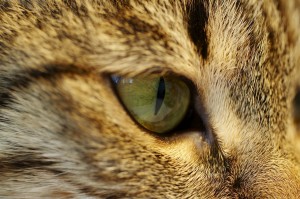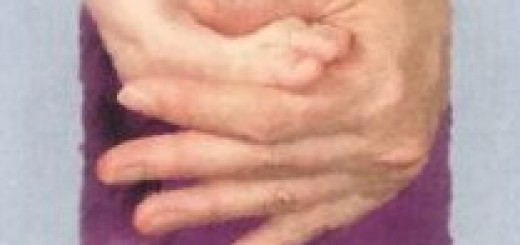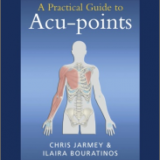Animal Reflexology: A Holistic Approach to Helping Pets
The use of pet reflexology is no longer an unusual approach for caring for our beloved animals.
Jackie Segers shares her perspectives on why pet owners and veterinarians should consider learning basic reflexology to offer pets an alternative or complimentary modality to support their well-being.
Read on to learn some tips on how to use reflexology with pets, and understand some of the many benefits.
Pet Reflexology By Jackie Segers
Our pets play a closer role in our lives now than at any other time in human history. Social paradigms have changed as many people lead a more isolated existence due to such things as the breakdown of social and family networks and the rise of the world wide web.
Natural therapies once considered only for humans are becoming increasingly acceptable for our companion animals. This is because people want to be empowered when it comes to the health of their loved ones, and also because they are safe, economical, and beneficial.
 Reflexology, a cross between massage and acupressure, is potentially part of this growing phenomenon. Reflexology is the idea that the ears, face, and feet of a person or animal represent a perfect microcosm of the whole body. By applying pressure to the feet, outer ears, and face you can have an effect on all the organs, structures, and glands.
Reflexology, a cross between massage and acupressure, is potentially part of this growing phenomenon. Reflexology is the idea that the ears, face, and feet of a person or animal represent a perfect microcosm of the whole body. By applying pressure to the feet, outer ears, and face you can have an effect on all the organs, structures, and glands.
Reflexology can create a deep relaxation response and promote healing in all areas. When stress is released, our self-correction mechanism takes over and restores the body back to a normal state of health.
This modality also improves circulation around specific organs as well as general blood and lymphatic circulation, which helps the absorption of nutrients and the removal of wastes.
Mapping Reflex Points on Pets
As a certified reflexologist and animal lover, I became interested in how reflexology could be applied to our companion animals.
So I began practicing on my own cats and then on the pets of my clients and friends with great success. I then mapped out the specific reflex points onto the paw, face, and ears.
A few people have sneered, “Why should reflexology work on my pet?” My reply to this question is, “Do we know if reflexology works on people?”
The answer of course is yes, according to the millions of people who benefit from this modality worldwide and have throughout history. So why wouldn’t it work on animals?
Humans and animals share the same anatomy and physiology, and have identical energy centers and energy pathways throughout the body. We are affected by many of the same health concerns and experience similar emotions and accumulate stress in our daily lives.
Health Benefits for Animals
Reflexology may help moderate the impact that modern living and the environment has on our pet’s health and longevity.
 Unfortunately, animals have a lower tolerance for the chemicals and toxins in their environment, yet they inhale or absorb them on a daily basis. Toxins can also form in the body as a result of a pet’s diet. Imagine living on fast food for every meal of your life! The majority of commercial pet food is laden with preservatives, salt, sugar, and additives. Eating this type of food can lead to major health problems in the long run.
Unfortunately, animals have a lower tolerance for the chemicals and toxins in their environment, yet they inhale or absorb them on a daily basis. Toxins can also form in the body as a result of a pet’s diet. Imagine living on fast food for every meal of your life! The majority of commercial pet food is laden with preservatives, salt, sugar, and additives. Eating this type of food can lead to major health problems in the long run.
Pets also experience stress just like us, so reflexology is a fantastic way to reduce tension in the nervous system. Chronic stress is the most common cause of all illness and disease in pets and humans alike. Living with humans can be a stressful experience and our companion animals have a lower threshold of stress than we do. Changes in the household or with their routine can be deeply unsettling.
Applying Reflexology to Animals
So how do I apply reflexology to my companion animal? For most cats and dogs, reflexology takes time to get used to. Start when they are at rest and with their favorite areas before progressing to the paws. Patience is essential: spend a little bit of time and then gradually increase the length of the session.
Dogs seem to be more comfortable having the back paws touched while cats prefer the front paws. I have also worked on pet rabbits and rats, so reflexology is for all our furry friends!
For stress and anxiety, I highly recommend stroking the ears. The tips of the ears are good for shock in particular.
For lower back and hip discomfort, massage the inside lower leg and paws which corresponds to the spine.
The face has some amazing points and is useful for everything from memory and emotions to hormones and digestive health.
What better way to deepen our connection with our pets than with therapies such as reflexology. Nurturing touch communicates non-verbally at the most simple level unconditional love—the desire that all pets and humans seek.
Reflexology is truly an innovative way to work alongside veterinary care because the whole pet is looked after so true healing takes place.
Reflexology for Cats
 The wonderful book, Reflexology for Cats, provides a detailed chart for working with your feline companions. The book also includes other modalities that are helpful natural approaches such as: Reiki, Bach Flower Remedies, acupressure and moxibustion, craniosacral therapies, etc.
The wonderful book, Reflexology for Cats, provides a detailed chart for working with your feline companions. The book also includes other modalities that are helpful natural approaches such as: Reiki, Bach Flower Remedies, acupressure and moxibustion, craniosacral therapies, etc.
Segers notes that animals share the same health concerns that humans do. They are treated with the same steroids and antibiotics. They even have the same reflex points for the most part. So it made sense to share with others what Segers learned over the years on how to work with pets using the art of reflexology.
She also included case studies from a variety of other holistic practitioners. The book is a lovely resource for reflexology therapists who are also animal lovers, or the pet owner who just wishes to incorporate nurturing and holistic approaches to help their pets remain happy and healthy companions.
Visit Jackie’s website to learn more at RevitalizeMe.com, and to order a copy of her Cats for Reflexology book. Or you can reach her by email at: vitalreiki@xtra.co.nz.









I already use Reiki to treat animals, finding it to be universally useful. Cats, dogs, and horses are very responsive. As a Reflexologist I would be very interested to learn about its use on animals. My attempt to try it on my cat turned him into s lethally armed shredding machine! I’m open to new suggestions.
My several dogs and cats are elderly. One has a persistent skin condition already treated by the vet for months, and also a cough. How and in which areas should I treat this female dog in particular, and all the other dogs to improve their health and condition?
Please, would you send me advice and instructions? I give them some cottage cheese with flax seed oil. Is this useful?
To be able to actually give my cat spa sessions is truly amazing!
Do you have a Reflexology book for dogs?
I love the idea that I can work on the reflex points at the same time that I pet and or groom a pet. What a wonderful book.
I use Reiki on my pets as well, as far as the Reflexology, I believe it would benefit pets. My kitty, Zeus loves having his front paws rubbed. He will even spread his toes. He likes having the tips of his ears rubbed as well. My Kitty Samuel J, not so much with the front paws. He has always been uptight from adoption, but he likes his belly rubbed and face stroked. Yes, if it works on us, it is probably going to be good for them as well. I use herbal treatments for them as well.
Emi, my friend has a cat that LOVES his paws rubbed right between each toe … he goes right into a trance state and won’t move! I never realized I was doing reflexology until I saw how Segers mapped the paw to reflexology points. Would be great to get Segers book on Amazon so those in the US have an easier time getting this book, but right now you need to contact her directly.
Wow, this is so amazing. I’m glad that there is also reflexology for animals. I’m a dog lover and a believer of reflexology. I would love to treat my dogs in a wonderful massage treatment.
I am thrilled to know that Reflexology for animals does exist. I once tried it on our Pomeranian because he couldn’t stop coughing. It worked. My children actually laughed at me, but they could not really deny that it worked either. The Pom’s chest is affected by hair balls? One of the Yorkies had a plate inserted in her hip after she was attacked by a big neighbor dog. She’s now five years old and moves slower. What can I do for her? Thank you.
Hi Hilary! Yes Reflexology is great. Last night I visited a friend who has a new dog, and spent some time doing a little reflexology, and the owner mentioned how the dog really took to me. 🙂 In regards to your Yorkie, along with massage and reflexology you can also try a pet alive rememdy. This one has received some good reviews: Pet Alive Remedy for Muscles and Joints. They also have a remedy for fur and hair balls in dogs and cats